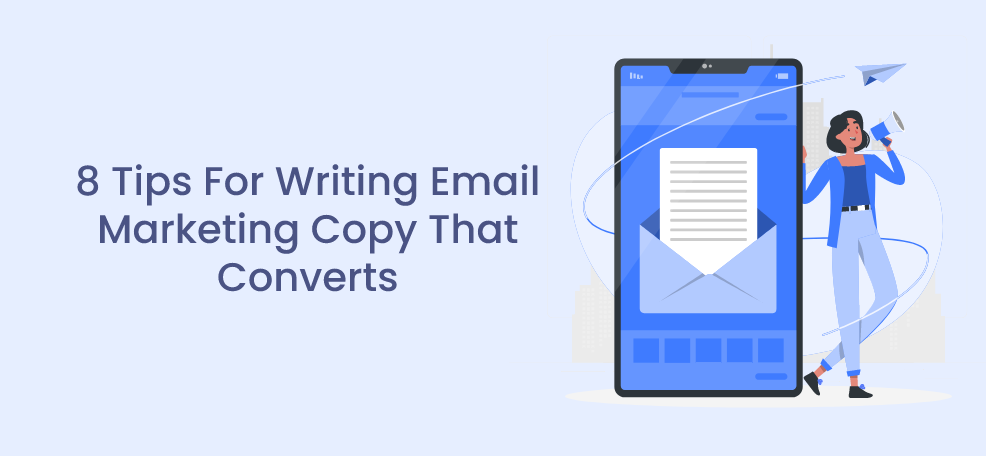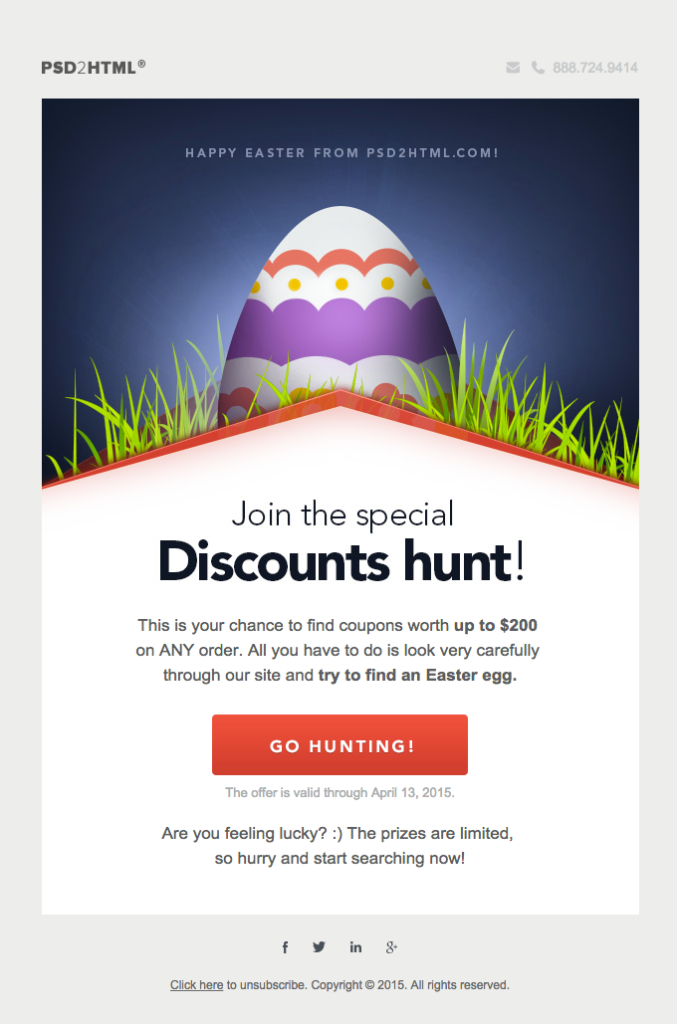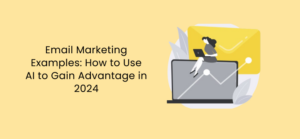Email marketing is much more than automating emails and getting conversions on your website.
Part of the reason email marketing is so popular and gets an ROI of 4200% is email copy—the juicy words in the email which highlight the benefits of your product or service and persuade the recipient into buying from you.
However, it’s not that easy.
Today, the dynamics of consumer decision-making are changing, and so is the way they make online purchases. If you want to reach their inbox and grab attention, so they open your email, read it, and take action—writing high-impact, conversion copy is a need more than a choice. It holds the potential to supercharge sales, and grow your business multifold.
This article will take you through eight proven tips to write email marketing copy that not only hooks your audience but also converts them from a subscriber to a paying customer.
Tips for writing high-converting email copy
You’ve built a solid email list, have started setting up your email marketing software, and are ready to pump emails and get the conversions rolling in. But before you do that, read these eight email copy tips (with brand examples), which will supercharge your conversions and make every dollar spent worth it.
1. Understand your audience
If you want to boost your conversion rate, writing emails that speak directly to your audience is important. Not knowing your subscribers, which profession they belong to, and which problems they’re facing can lead to boring emails which don’t add any value to your audience—ultimately leading to a declining ROI.
So, before you start writing your emails, understand what kind of subscribers are added to your list. For this, you can create a survey and distribute it among your target audience, conduct problem interviews and analyze your social media and website insights. Here’s what you should aim at understanding:
- Demographics and psychographics
- Buying potential
- Stage of the funnel
- Major trigger points or problems
- Interests and hobbies
- Outcome or solution they’re seeking
Based on this information, create a buyer persona—a semi-fictional representation of your ideal customer. The more detailed and specific you are while crafting your buyer persona, the better you can target your audience and write emails that get actual conversions and not hollow results.
2. Focus on your subject line and preview text
The subject line and preview text are the first two things your subscriber will see when your email lands in their inbox. Safe to say, unless both of these stand out in the inbox and ignite a sense of curiosity—your audience won’t open the email.
But apart from getting them to open your emails, a good email subject line can be all you need to avoid being deleted from the inbox, unsubscribed, or worse, reported as spam.
Here are a few email subject line tips you can follow to enhance your open rate and move the needle towards faster conversion:
- Keep them up to 30 characters; else, they’ll get cut in the inbox. The best performing subject lines contain four words or less. Notice the first email here:
- Avoid using filler words, and use action words like “Free, you, exclusive, limited, profitable, etc.
- Use emojis in your subject line to make them stand out in the inbox and, thus, invite an open.
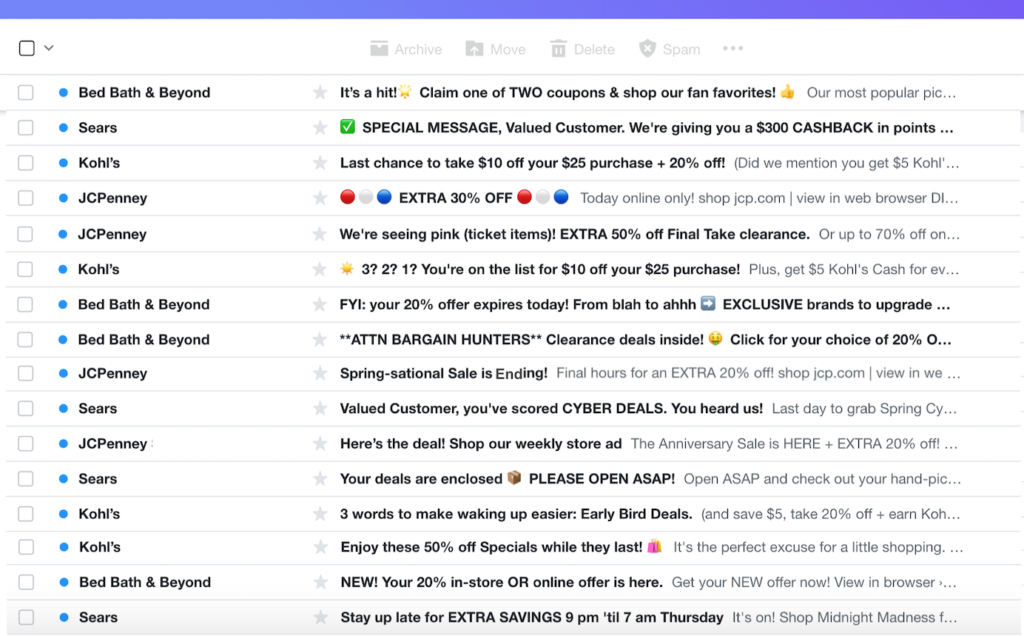
- Personalize it by using the first name of the recipient as the first word of the subject line. This can be done through any email marketing software.

- State something controversial, shocking or ask a question—avoid click baits or fake statements.
The preview text—the sentences below the subject line in the inbox that elaborates on the context of your email—also holds massive significance and can make or break your email marketing efforts.
Here are some preview text writing tips to help you conquer this segment and bag more email opens:
- Keep your preview text between 35-40 characters to avoid being cut in the inbox.
- Include a Call-to-Action or a sense of urgency to make the subscriber curious.
- Rather than summarizing your email, highlight the benefits of reading the email.
- Condense the benefits of your offer in one sentence and use buzz words.
Subject lines and preview texts are an essential component of email copy and set the tone for the rest of your association with the subscriber. Moreover, they build the first impression with the user, so pay attention to it and perform A/B tests to see what works best with your audience.
3. Include a touch of storytelling in your writing
Storytelling is a narrative technique used to bind and connect the audience and brand to form a stronger bond.
Statista ranked storytelling as the second most effective approach in content marketing. This is especially because stories help uncover the brand’s personality and build recall value, leading to the sale.
You can engage in text, image, or video storytelling by uncovering a story with characters, conflict, and solutions. From welcome emails to sales emails, stories work greatly and produce some awesome results.
Here are a few tips on how you can incorporate storytelling in your email copy to enhance sales:
- Commemorate your festival and occasion offers by tying them to a story for better relatability and faster conversion. Use visual aid along with text and emojis to convey the story wonderfully.
- Create a narrative around your offer and connect it to something that triggers nostalgia or another feeling like happiness or sadness (often used in emotional advertising).
- Don’t start your emails with the usual “Hi” and what you’re offering. Make it conversational and like a typical story, begin the email with a bang—an interesting opening that hooks them.
- Connect your story with the offer, build up the hype, and then transition into the CTA to make it seem natural and hard to resist.
4. Use psychological tricks in body copy
Most of the marketing and advertising collateral today include psychology. It helps manipulate the consumer buying decisions positively to turn it into the brand’s favor and enhance conversions.
By triggering instincts, marketing psychology can significantly improve engagement and conversions. Let’s look at some psychological marketing tricks you can use in your emails to hit the right spot:
- Fear of Missing Out (FOMO)
FOMO is one of the biggest triggers for enhancing skills and cashes on the fear of scarcity. When users find something is present in limited quantities, they are more likely to buy it faster. This happens because they feel the deal is being offered at a great deal only for a limited period, so they should buy it.

It’s one of the oldest tricks in the book and gets wonderful results as over 60% of millennials purchase things because of FOMO.
- Social proof
This psychological trick makes users feel your product or service is loved by people and picks on original quotes by customers to build proof around its effectiveness. As a general rule of thumb, we are more likely to trust a word by a customer who’s invested money than a brand trying to market themselves.
Think about it—are you more likely to buy an expensive pair of football shoes by Nike if the brand themselves call their shoes “the most amazing pair of football kicks you can own” or when you see 10s of reviews by customers praising them?
Probably the latter, and this is why it works so well.
- Understanding colors
As weird as it may sound, the choice of colors in your email directly impacts the buying or action-based decisions of your customers. While you don’t have many color options in emails, you can still use them for CTAs and visuals to leverage this psychological tactic.

For example, Hubspot changed its CTA from red to green and saw a 21% increase in click-through rate. Understanding how different colors bring out specific emotions can be highly beneficial not just for emails but all your marketing efforts.

Apart from these three psychological tactics, there are plenty of others you can use—reciprocity, foot-in-the-door technique, exclusivity, and open-ended questions to stir curiosity. Using these in your emails can significantly improve your CTR and thus also your conversions.
5. Leverage the power of personalization
Adding the recipient’s first name in the subject line is only one part of personalization—and there’s a whole lot of things you can do apart from them.
Personalizing your emails essentially means making them more relevant to the user and crafting them in a laser-focused manner, so every person on your list feels you’re directly talking to them. In fact, personalized emails deliver 6x higher transactional rates.
But for personalization to be successful, you need to segment your lists based on their preferences and categories—because only then can you plan campaigns that focus on their needs. You will also need to consider high email deliverability, check SPF records, and safe messaging in general. There is a suite of things you can personalize your emails with:
- Purchase or cart history to display related items they can check out and potentially buy.
- Location and culture-specific choices based on recent activity or cart abandonment on your website.
- Use personalized images for a surprise factor that shows you care about every subscriber on the list.

6. Use rich media
Getting email sign-ups is not enough; you need to hook your audience’s attention to sell to them. Humans are visual beings. It’s easy for us to focus our attention and engage with interactive content like images, GIFs, and videos more than text. And if you want your emails to stand out and create an impact, using rich media should be one of your top priorities on the list.
Many emails today, transactional and educational, include at least one piece of media.
The reason? Something moving in the email or a visual element immediately catches attention, compelling users to continue reading it.
However, this doesn’t mean you include whatever feels relevant to you. You must follow certain principles and best practices to optimize media use for better engagement and conversions. Here are some of them:
- Avoid using stock images as they’re overused on the internet, and don’t add originality to the email content.
- Include high-resolution images which don’t take up the entire space but add value to the users.
- Use media with human faces to enhance trust and give out a sense of belonging.
- Include alt-text for your media so the users can understand what you’re trying to convey if the image doesn’t load.
- Use GIFs to communicate the feeling of the email; however, make sure it’s not a heavy file as it may affect deliverability or, worse, fail to load upon receiving.
- Embed or link videos in the email than adding them as an attachment for faster load speed and viewing experience.
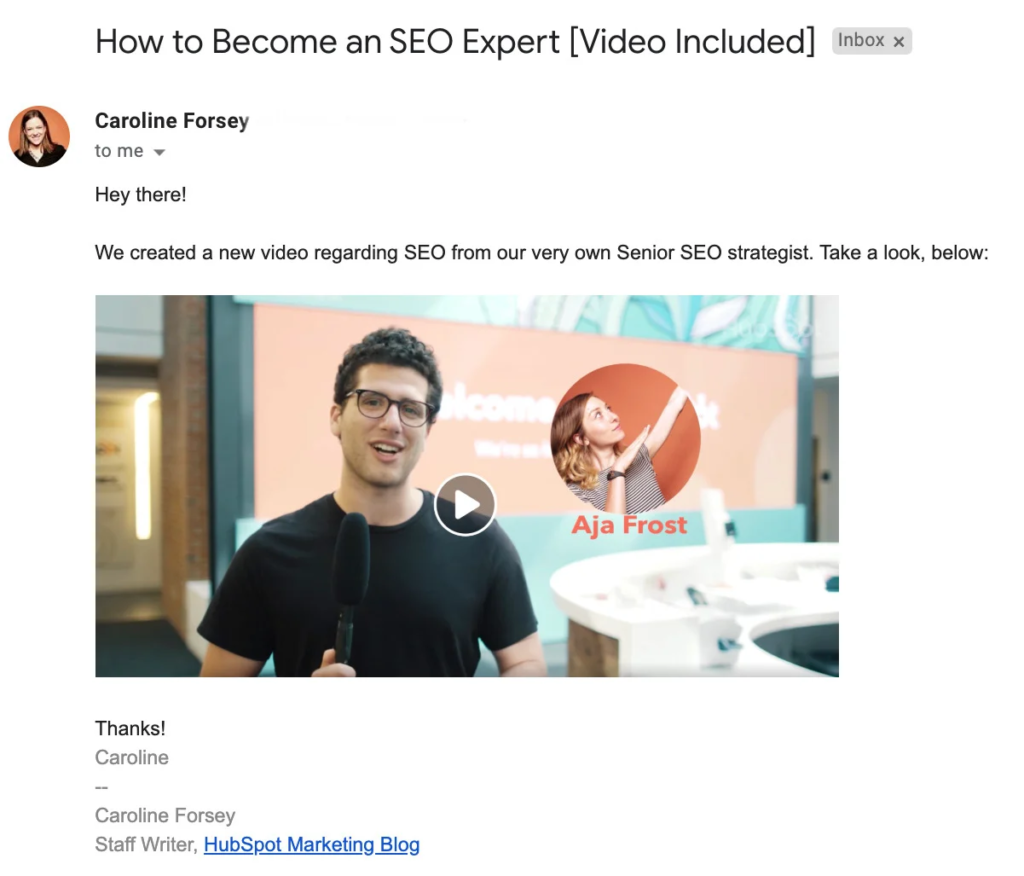
Adding rich media to your emails can significantly enhance your conversions because it will show a visual representation of the product or service you’re offering thus, making it easier for the subscribers to imagine themselves using it leading to the purchase.
7. Structure your email properly
People receive more than half a dozen emails every day because email marketing is booming. No matter how great that is, it’s still affecting and reducing the odds of your email being read and taken action from—unless you make it quick.
Users skim more than reading emails.
How many times have you opened an email, scrolled through it, and when you found nothing of value, gotten back to your business? Probably many times because no one has the time to go through emails in their entirety.
Solution? Skim-proof your emails.
As one of the best email marketing practices you can follow, structuring your emails properly will make your email more readable and make it faster for the reader to reach the CTA.
Here are some tips for formatting your emails properly:
- Use bullet points to break down lists or long sentences.
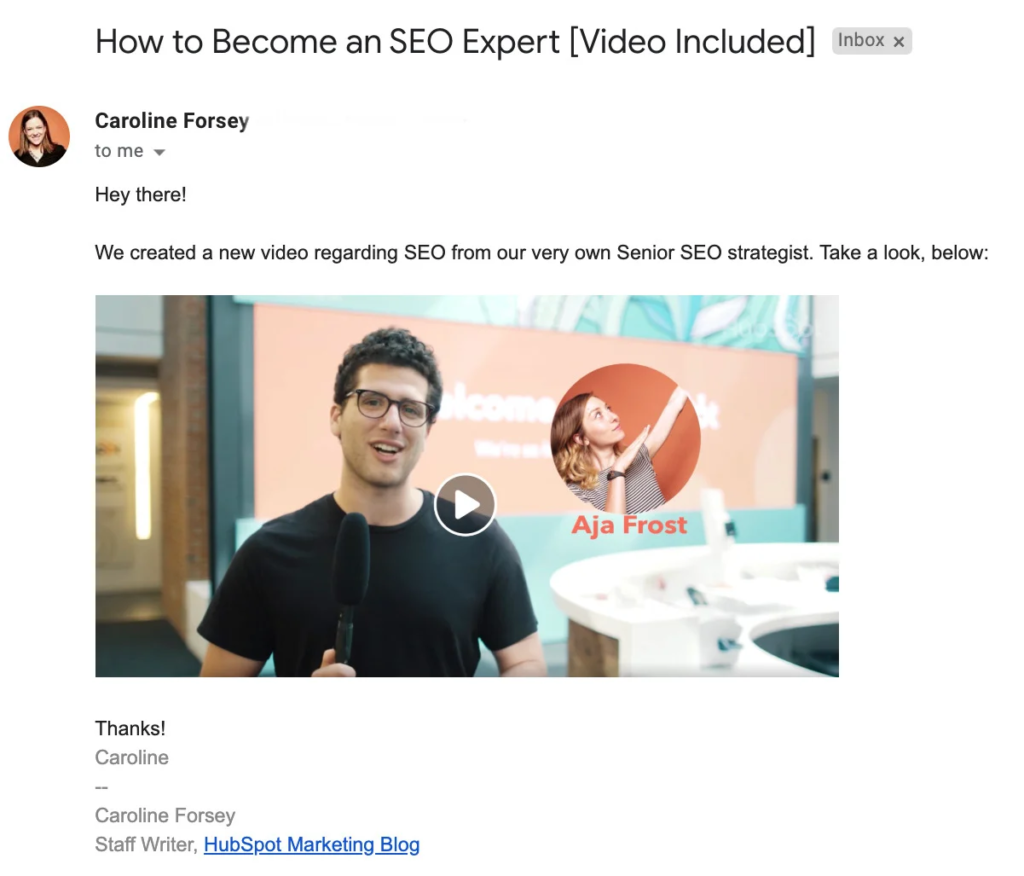
- Highlight important things using bold, italics, and underline.
- Embed your text in an infographic to find a sweet spot between text and media.
- Keep your sentences short and the overall email crisp and straightforward.
Making your emails never-ending or hard to consume can hurt your email marketing efforts. Formatting is a small yet significant aspect of emails and largely determines if the user will take action after opening your email—so make it a priority.
8. Position the CTA strategically
The ultimate goal of your email copy is to drive action, for which the CTA holds massive significance. From placement to button color—the smallest of things matter in creating high-converting email campaigns.
Instead of a pushy sales email, build trust with your body copy and subject line, so they naturally reach the CTA and take the desired action. However, the placement of your link also makes a difference.
More than adding multiple links, a solid buildup to a single CTA can also do the trick. However, here are some tips to optimize your email CTAs for maximum clicks:
- Use bright and bold colors for your CTA button, so that’s the first thing users see when they open the email.
- Use compelling and crisp CTA copy that tells them exactly what they need to do. For example, if you want them to check out a product, don’t say, “You can have it today,” say “Buy the product now.” It’s much more direct and straightforward.
- Write benefit-driven content above the link to highlight what’s in it for them and why they should click on it right away.
Apart from the evident CTA button in the email, you can sneakily add it in your email signature, too, perhaps for a different product or purpose like checking out a blog or accessing a free trial.
The CTA is your ultimate ticket to conversion, so rather than winging it, pay sufficient attention to it. From the call to action that invites people to join your email list to the one in your email, they hold immense importance in email marketing. It’s wise to A/B test your CTAs to see what’s working well with your audience and how you can enhance conversions further.
Conclusion
Providing a cohesive email experience to your subscribers is not just about sending promotional emails which directly sell your product or service. It’s about building trust, starting a dialogue, and most of all, persuading them to check out your offer on their own will.
The purpose of conversion-focused email copy is not to make the subscriber feel you’re pushing them towards the sale, but rather they’re being attracted to it because of the way it’s positioned. From storytelling to using personalization and rich media, there are many ways you can boost your email copy for conversions.
Use this article to note all email marketing copy best practices, so you can start implementing them in your strategy from today to pave the path towards a rising revenue graph.
Author’s Bio

Eduard Klein is an International Digital Growth Marketer, Blogger, and Entrepreneur with a global mindset. He guides people through the process of starting and growing a digital business, and to ride the wave of digital technology and marketing without getting swept away.
